SMOKING WALL / INVISIBLE HEAT
First and foremost, we say this: Free Palestine and decolonize Indigenous land world-wide, from every river to every sea.
And as for this specific show: the title, Smoking Wall / Invisible Heat, draws first on a literal description of Harley Hollenstein’s Lipstick, a cigarette-as-eternal flame embedded in the wall, and second from the title of Evie Horton’s painting, What we know as real is burned away by invisible heat. The two-part title is also an organizational method for understanding art’s potential to confront power structures and state violence, and the artist’s access to creative acts of destruction to imagine worlds otherwise. Through this schema, “smoking wall” evokes artmaking-as-overt-call to literally burn down oppressive systems, and “invisible heat,” the opacity and fugitivity to enact these very means.
This statement continues in three parts, first dwelling on select works that exemplify the smoking wall; then those of invisible heat; and finally the broader questions that trouble this and, indeed, every art exhibition.
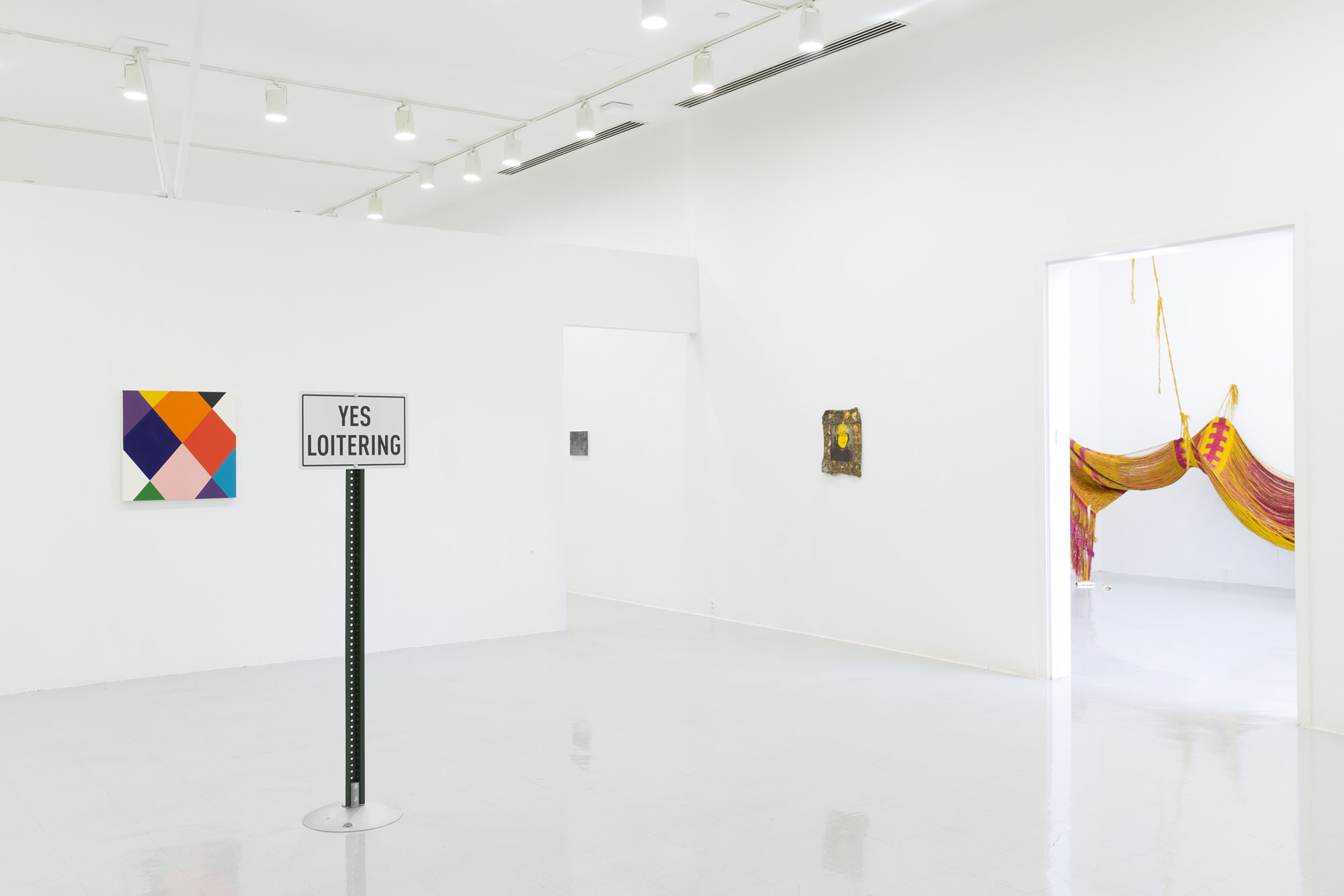
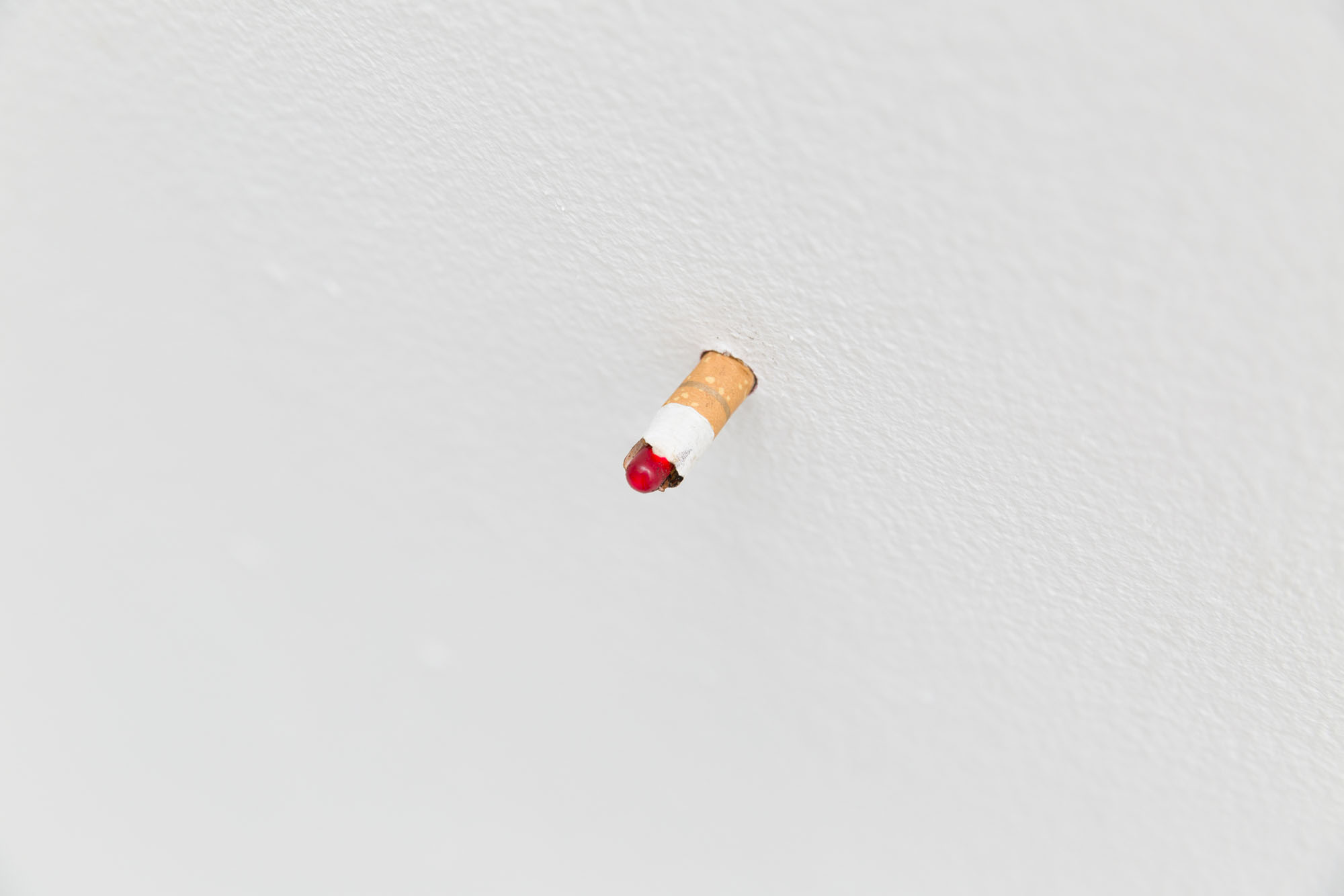
On the matter of the smoking wall:
“Clouds, jump the tracks with a blowtorch! Rain violent girl unravel your shreds! Sea wound settle in with a hiss! All funnels and volcanoes adrift! Stampede mad gods! Blow your brains out! Let the fields be ripped apart by the trident and the pearl fishermen be catapulted to the very sky! A thought. What? The fire that is no longer squandered. What is possible tearing in its sumptuous chest everything slow in becoming.”
Aimé Césaire, “From My Stud Farms,”
trans. Clayton Eshleman & Annette Smith
We chose to confront our audience immediately with Chat Travieso’s Yes Loitering, a to-scale street sign which states just that. For the duration of the opening, Yes Loitering lived in the building’s front courtyard, preceding the gallery and reminding us that art exceeds the vacuum of white-space. In the explicit invitation of the sign, art is a thing that lives outdoors, and in our presence in public spaces, and in our very capacity to gather.
Entering the gallery proper, we’re greeted by the aforementioned Lipstick, an ironic gesture that, if realized, could burn down the gallery—or the building. Behind this smoking wall is Gallery J, filled with paintings by Evie Horton, Marc Handelman, Katerina Pansera, and Feyaz Yusuff. They weave through a connective color palette that smolders like the wall on which they hang. A smoking wall, a smoldering gallery, a room about to fall down, a fire hazard menacing the whole city block; this literalization of “burn it down” aptly draws us deeper into the show, many of whose interior rooms take on the material histories of taking fire to structures of violence.
Ian Byers-Gamber’s IDF Caterpillar D9R, Unknown Ordinance depicts an armored bulldozer mid-explosion. The IDF wields these custom-built machines, pet-named Doobi or teddy bear, to demolish Palestinian homes, uproot ancestral olive trees, and commit murder; in other words, it is one of the more spectacular tools of Israeli necropower. In staging his own explosion, Byers-Gamber creates a radical imaginary to celebrate the real actions necessary for decolonization within our lifetime.
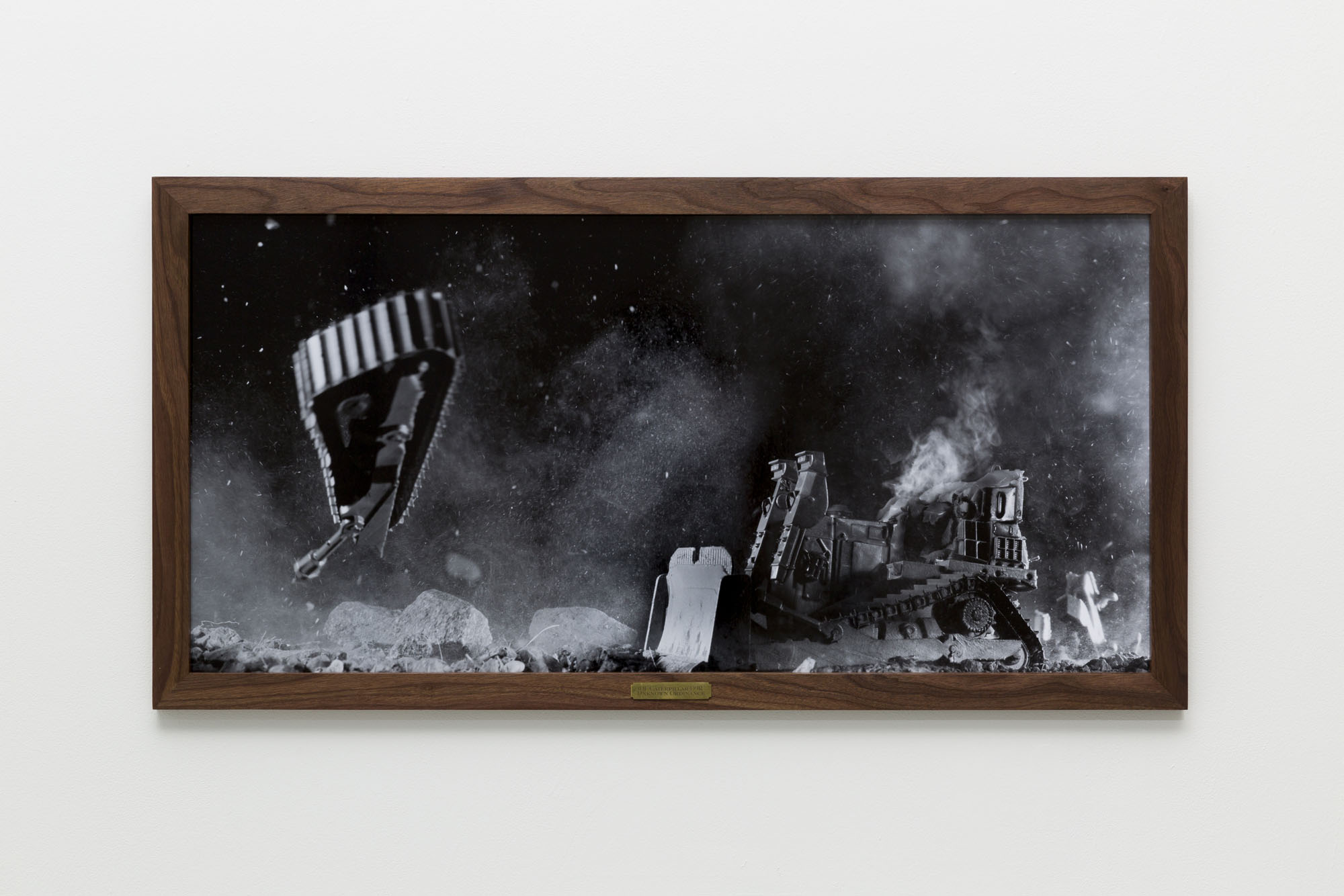

Shane Whilden’s foment diffusion is a cacophony of cop cars combusting in a field of smoke, an AI-made composition without fixed perspective. This work calls to mind the legacy of resistance rooted in fire, and the importance of fire as a material for struggle, particularly for victims of state-sanctioned murder. Through it we recall specific acts: an NYPD cruiser ablaze, the 3rd Precinct in Minneapolis in ashes, both during the 2020 uprisings. We also recall the processes of image-trained machine learning, so closely tied to predictive policing, “target acquisition,” and environmental carnage.
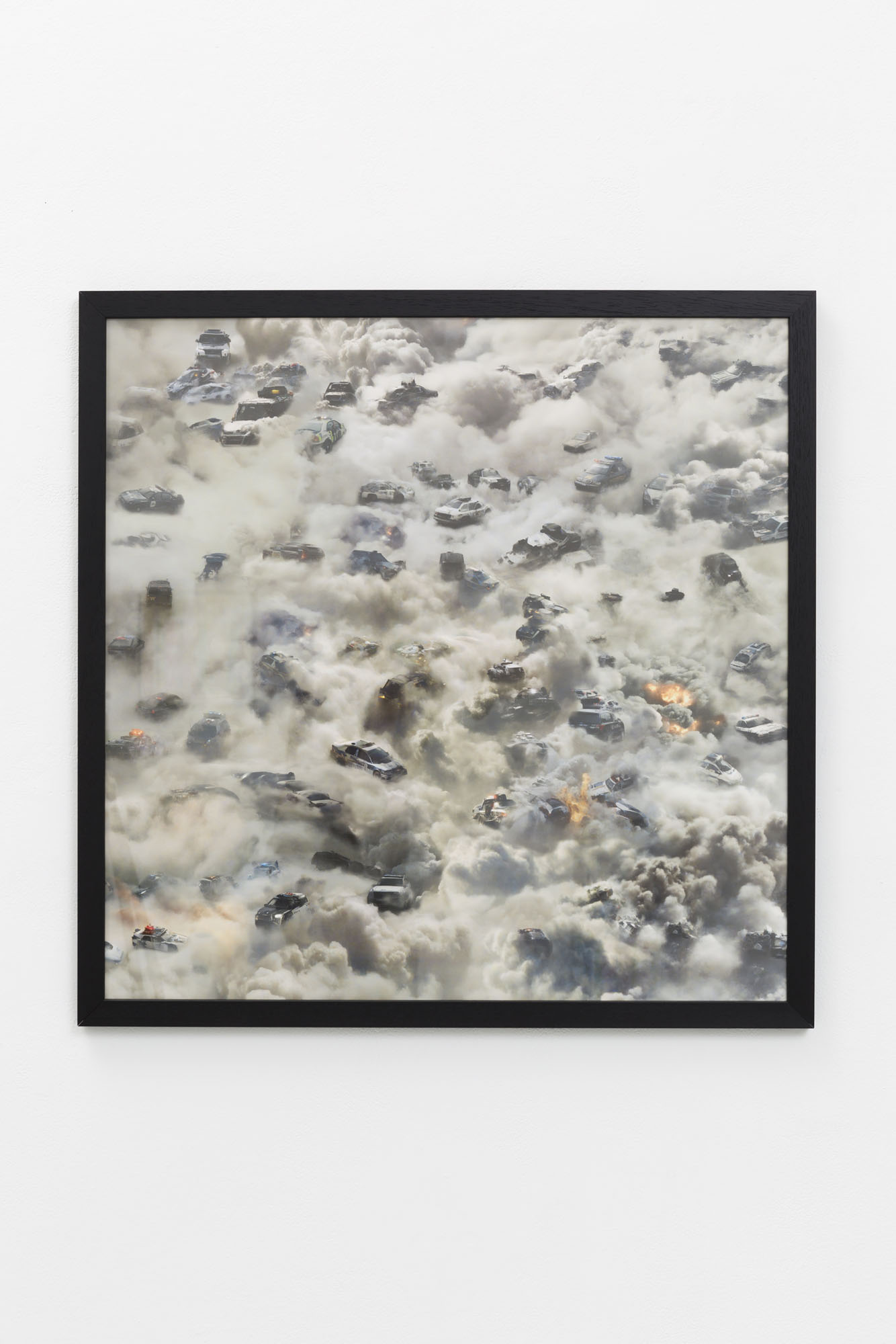
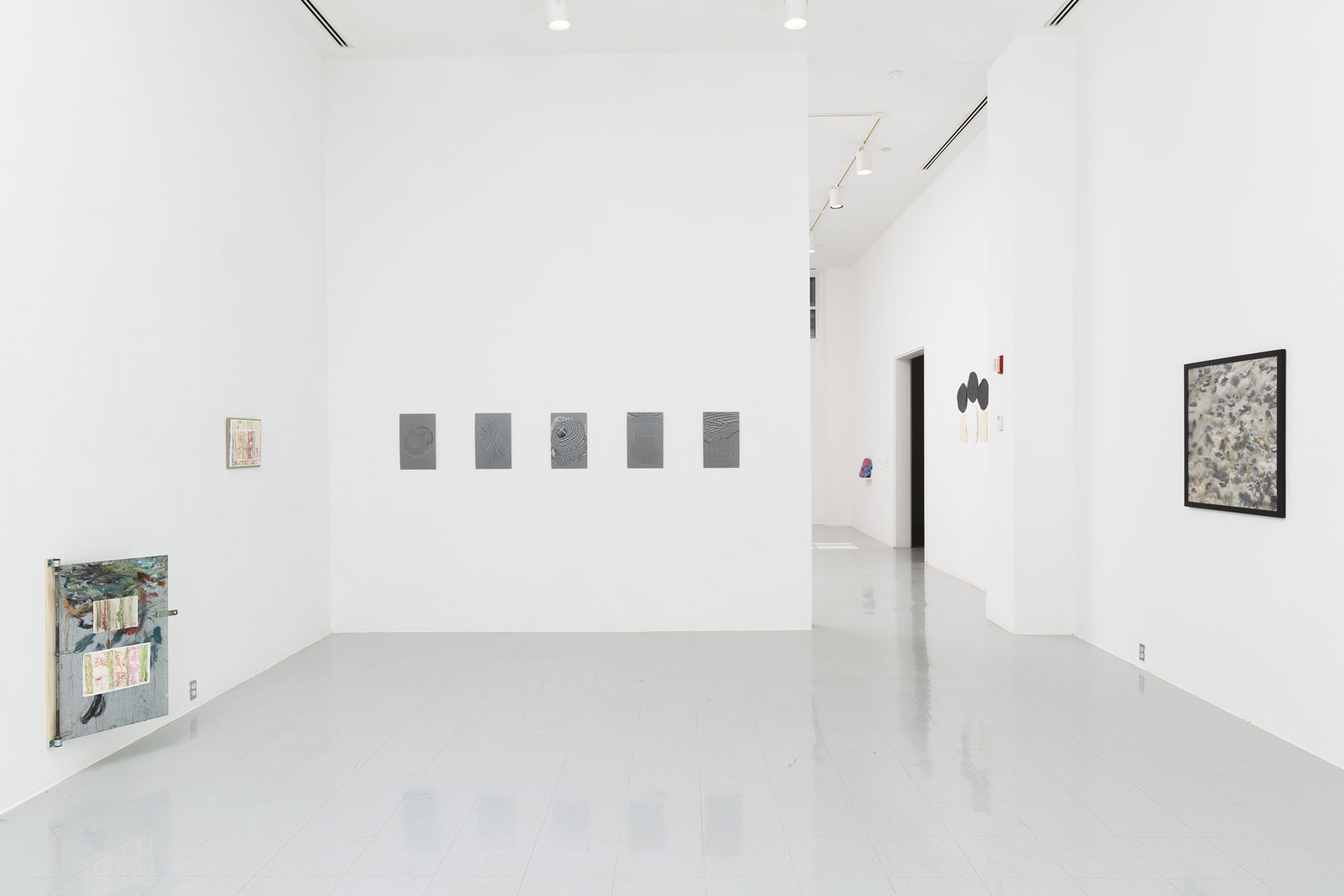
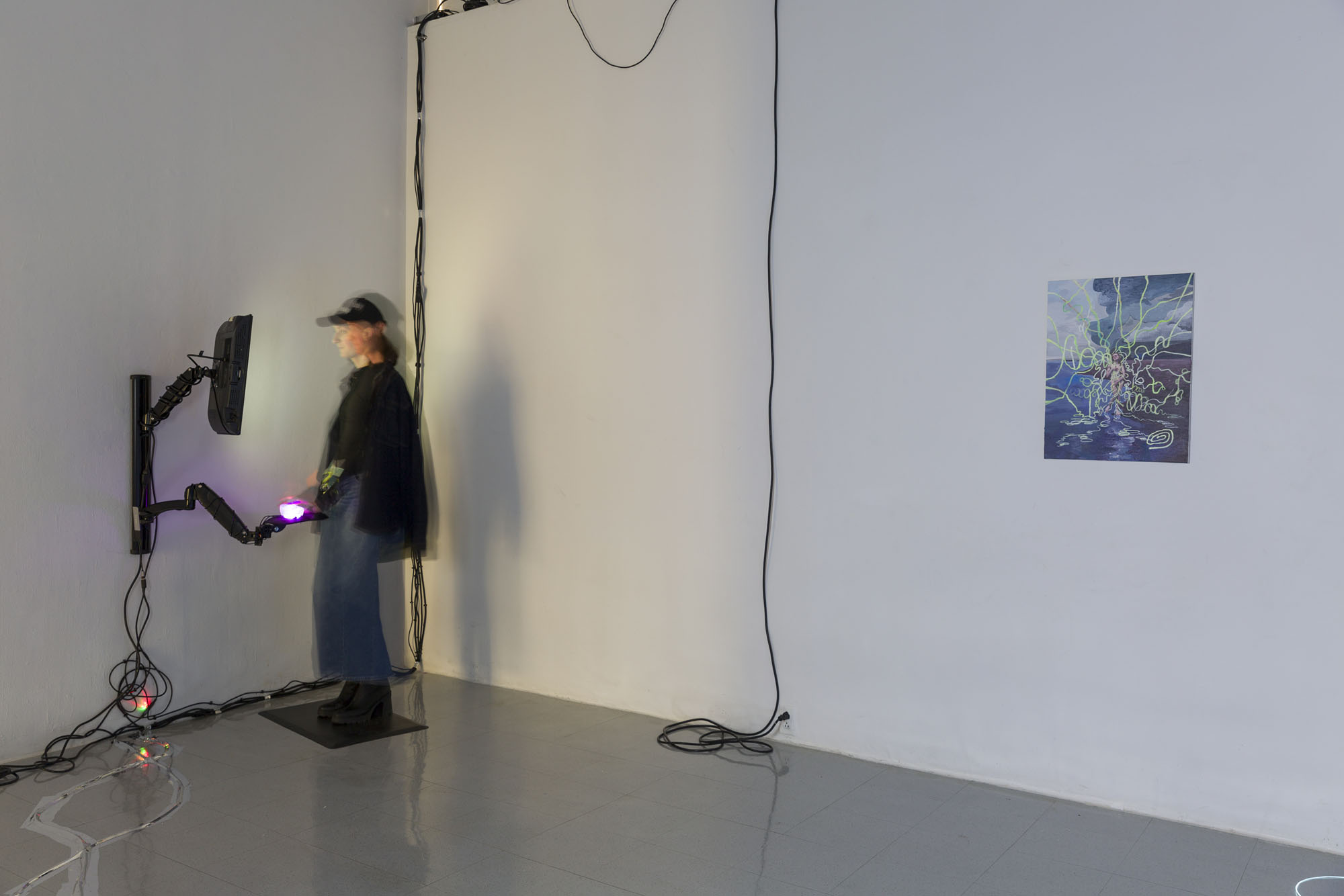
Saba Maheen’s installation, Starlings:Leaflets, positions the viewer as an active mediator in the space amongst two projectors with parallel content. One video depicts falling leaflets, regularly dispersed in IDF flyovers to mock Palestinian citizens in the guise of bomb warnings; as of today, the IDF have dropped over 70,000 tons of US-funded bombs on Gaza, a densely populated strip of land roughly the size of Philadelphia. The other depicts a “murmuration,” or a flock of starlings flying in unison. As one moves around the space, they variously shadow one image or the other—shifting legibility between symbols of life and death. Accompanying the exhibition are 32 handmade poppy seed paper leaflets with letterpressed text, reading “Killing the flowers will not delay spring,” along with an invitation to donate to Operation Olive Branch in exchange for a leaflet to plant or to keep.


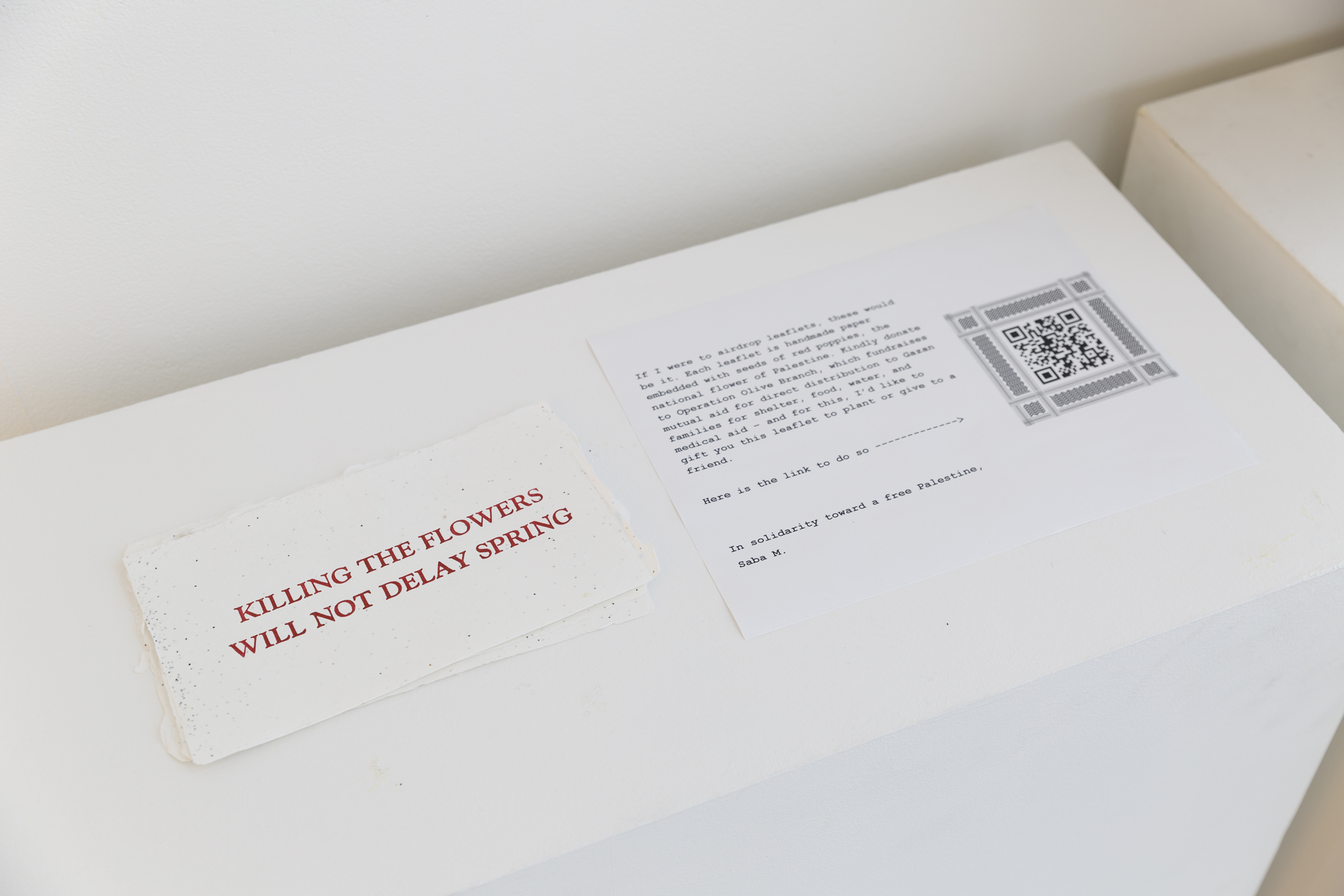
On the matter of invisible heat:
“Language isn’t universal, but resistance is.”
Luca G.
If Smoking Wall smokes, flames, combusts, Invisible Heat fumes, off-gasses, irradiates. This half of the show evokes non-visual or extra-visual phenomena: infrared waves, clear-burning ethanol, UV radiation. These works operate through the obscure, the tangent, and/or other indirect means.
Marc Handelman’s three paintings draw from the archive of herbarium vouchers from Lewis and Clark’s expedition to present-day Oregon. This plant archive speaks to the coloniality of all such endeavors: cataloging, classifying, taxonomizing, and otherwise abstracting nature. In Handelman’s paintings, the genocidal legacy of manifest destiny plays against the seeming virtue of modern scientism. Handelman’s white field painting, (Not yet titled / Weippe Prairie, June 10, 1806 / PH-LC 170), particularly recalls the hair-braid-embossed handmade paper of Untitled, by Alisa Sikelianos-Carter. Both use tactile surfaces to point to the importance of engaging with the spirit, or impressions of the past, through touch and slow witnessing—an alternative to privileging sighted ability and shallow convictions.
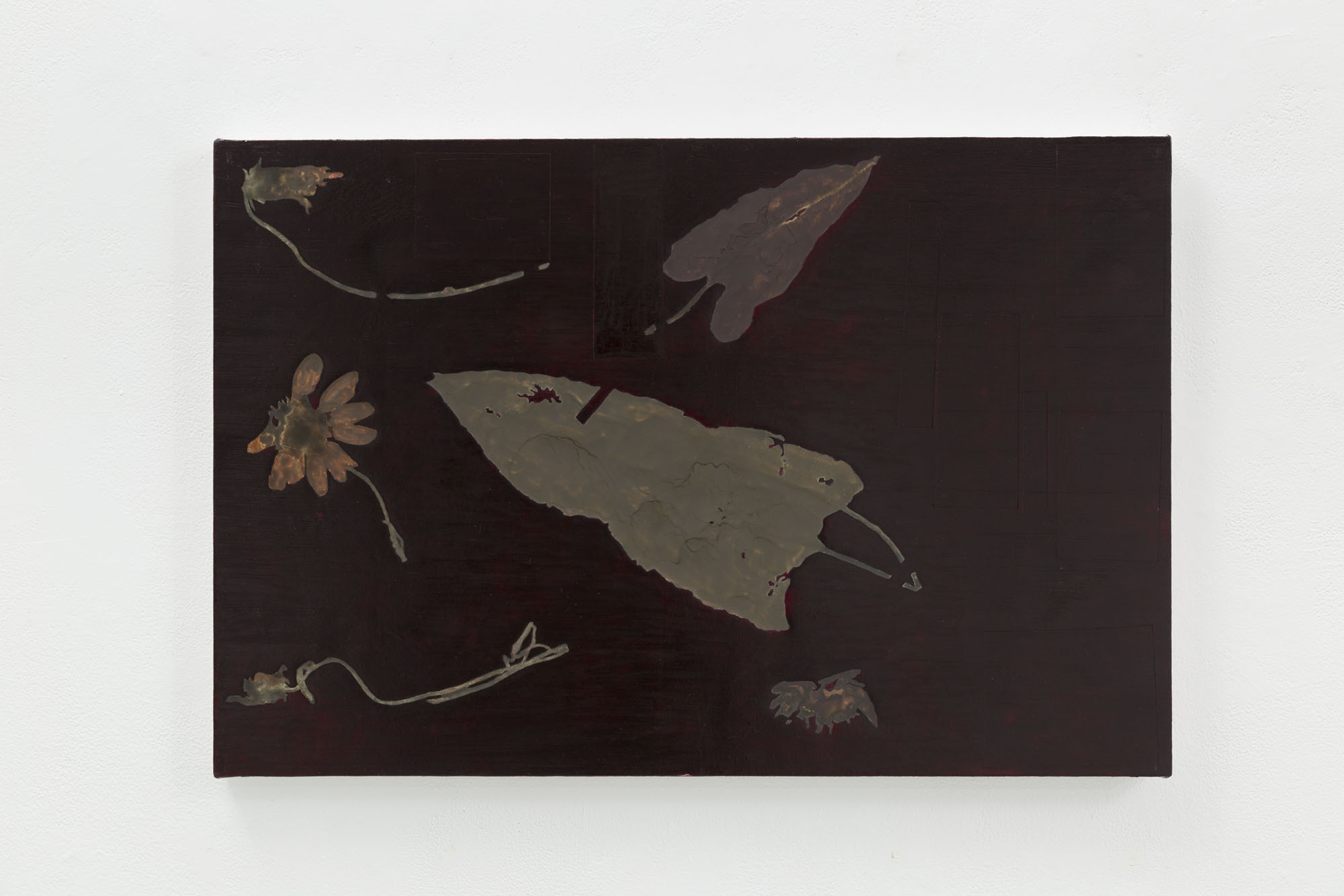

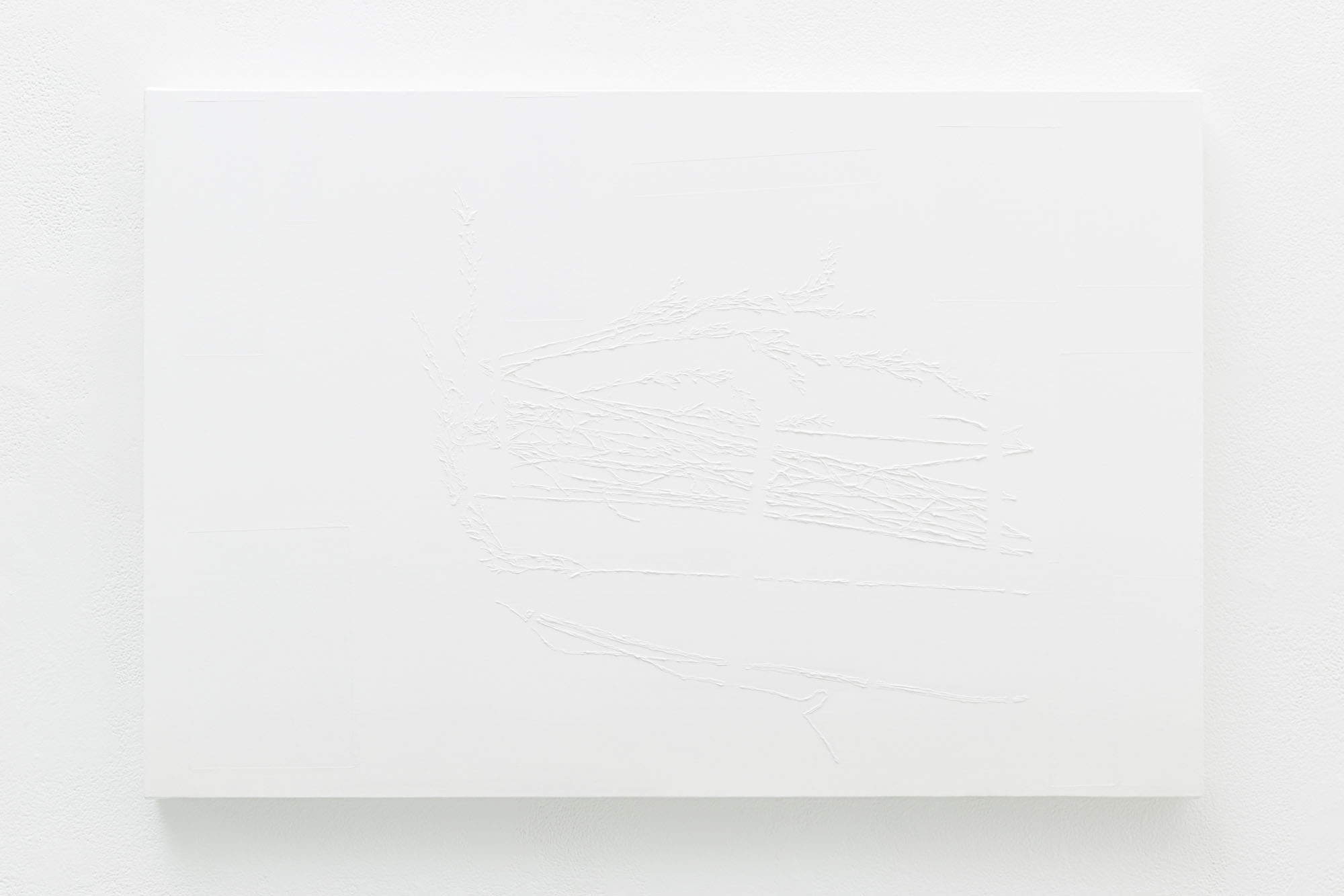
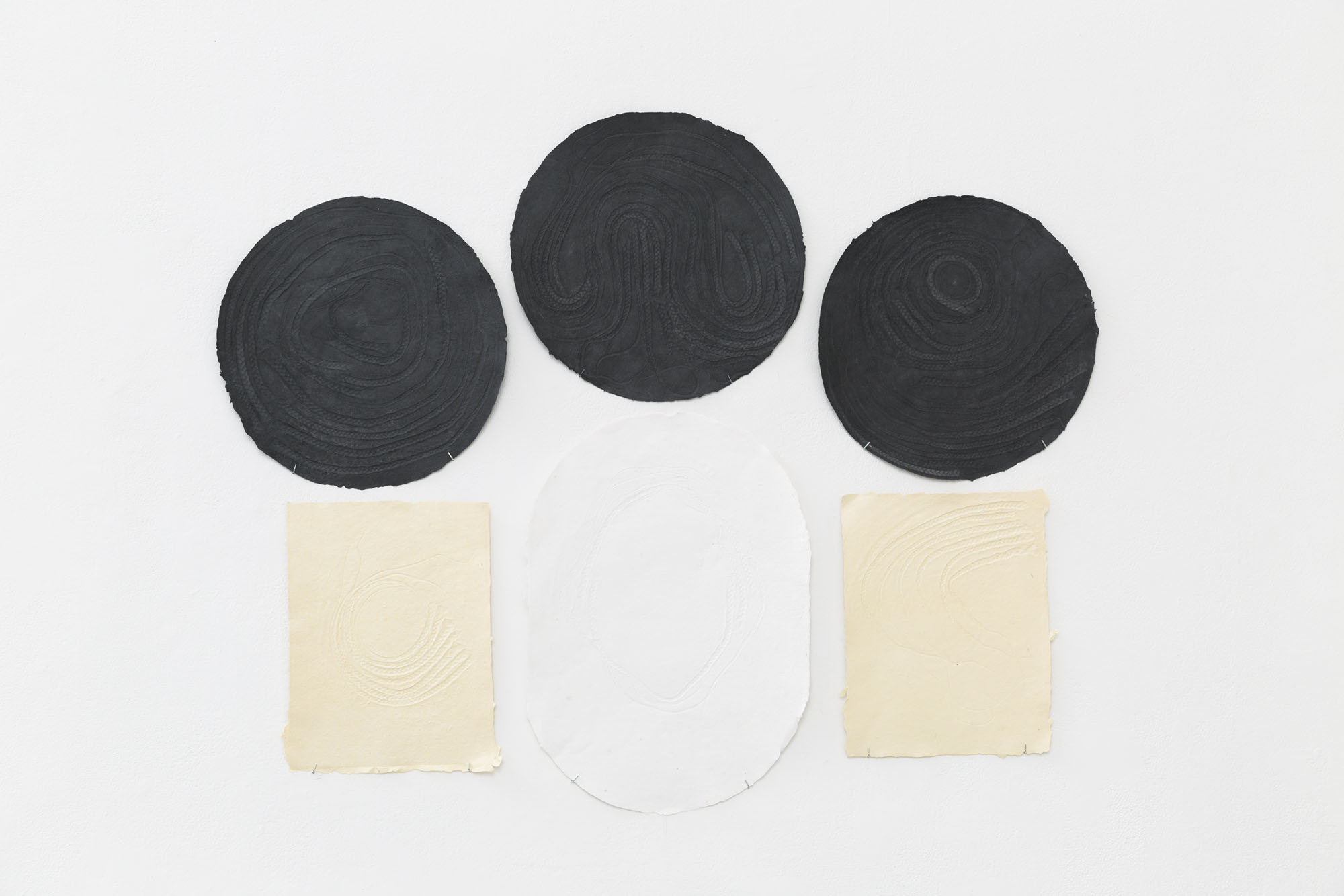
Jason Hirata’s Accumulator—August ‘24 contains four color field paintings in red, green, white, and black, a reinterpretation of Felix Gonzalez-Torres’ Forbidden Colors (1988)—the continuing relevance of which points to the ongoing history of censoring and repressing Palestinian solidarity. Jason reaffirms the potency of these four colors together while also placing them into a simple unfinished cabinet, a gesture that allows us to imagine the importance of proliferating these four colors in spaces outside the gallery: the home, the workplace, the classroom.
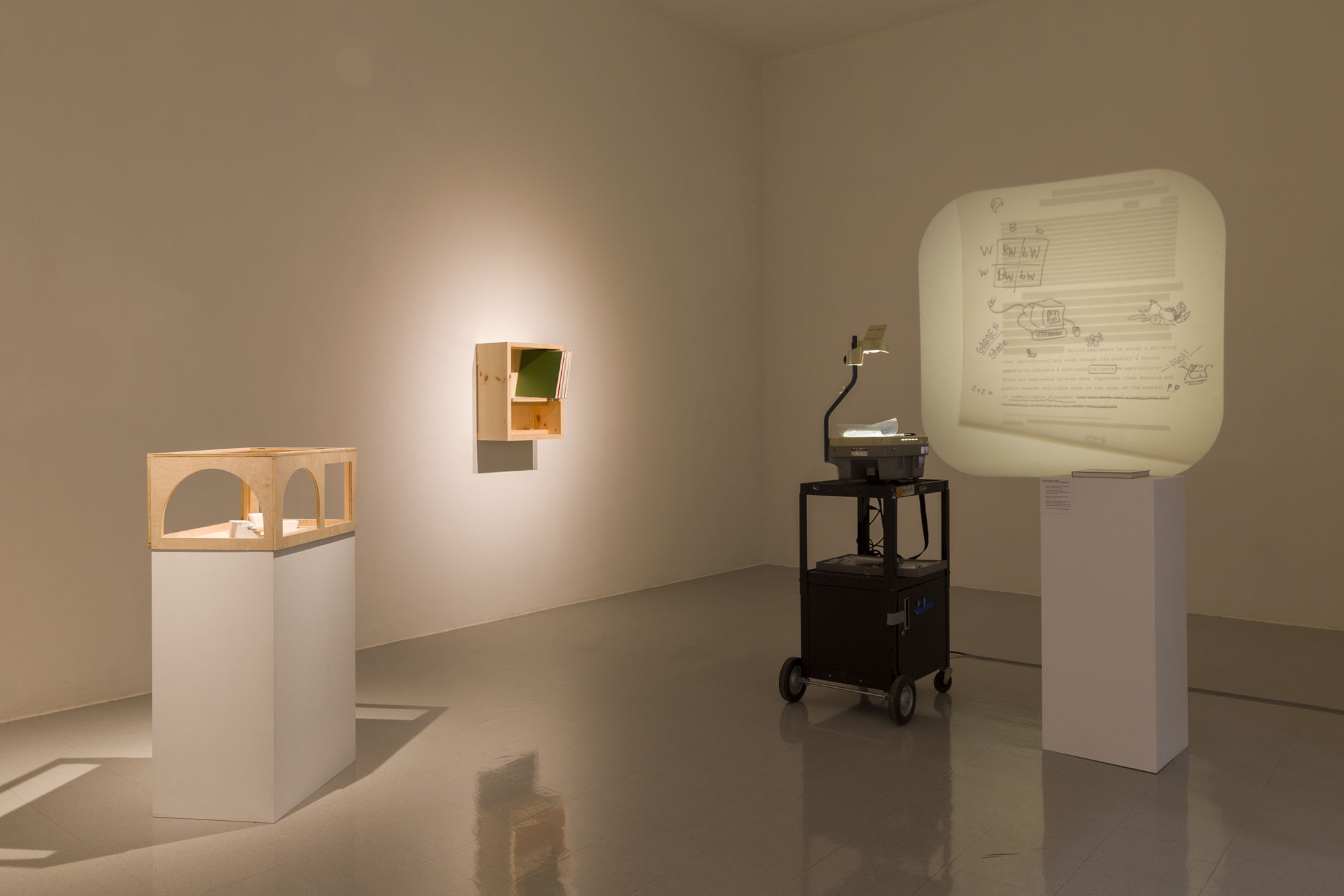
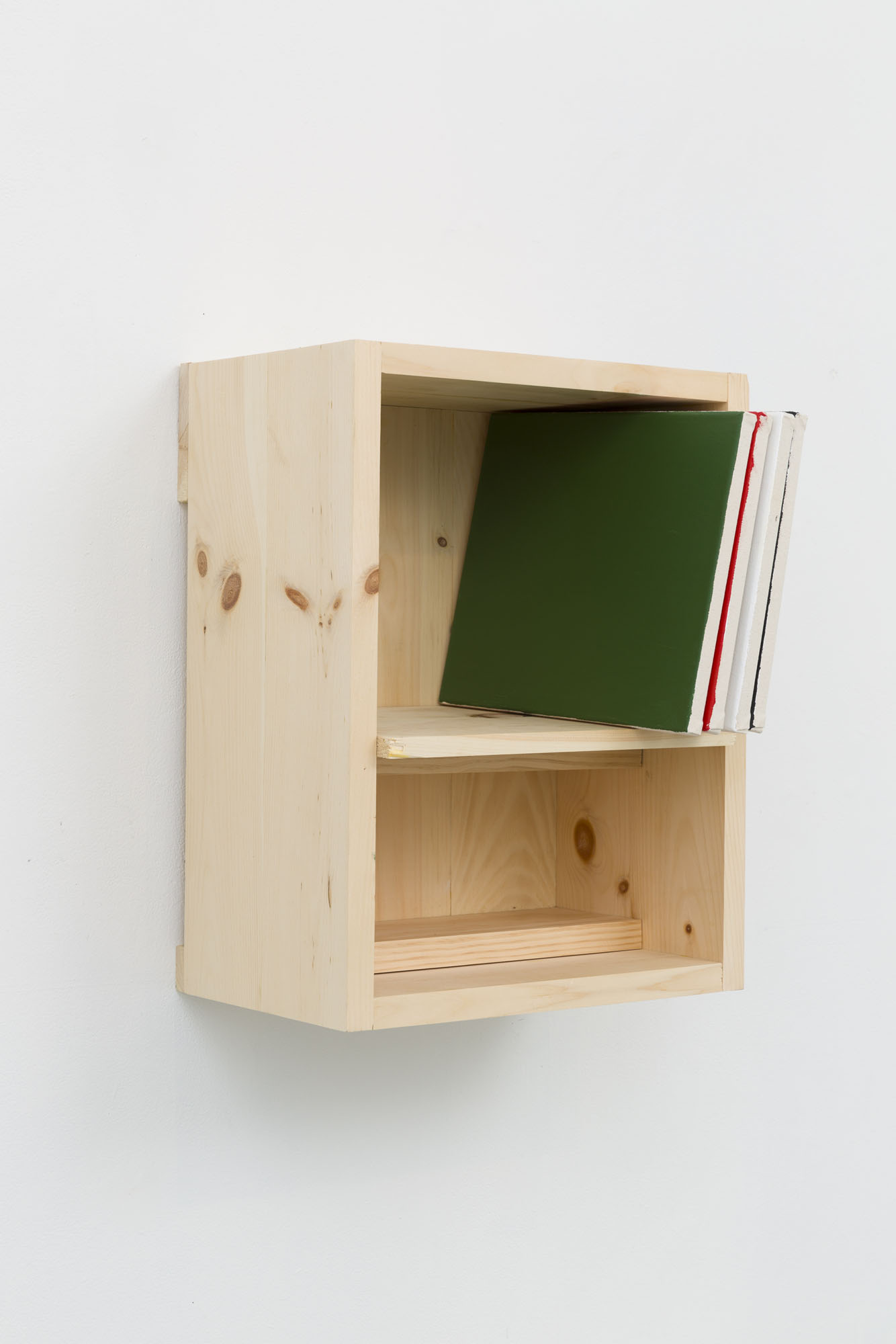
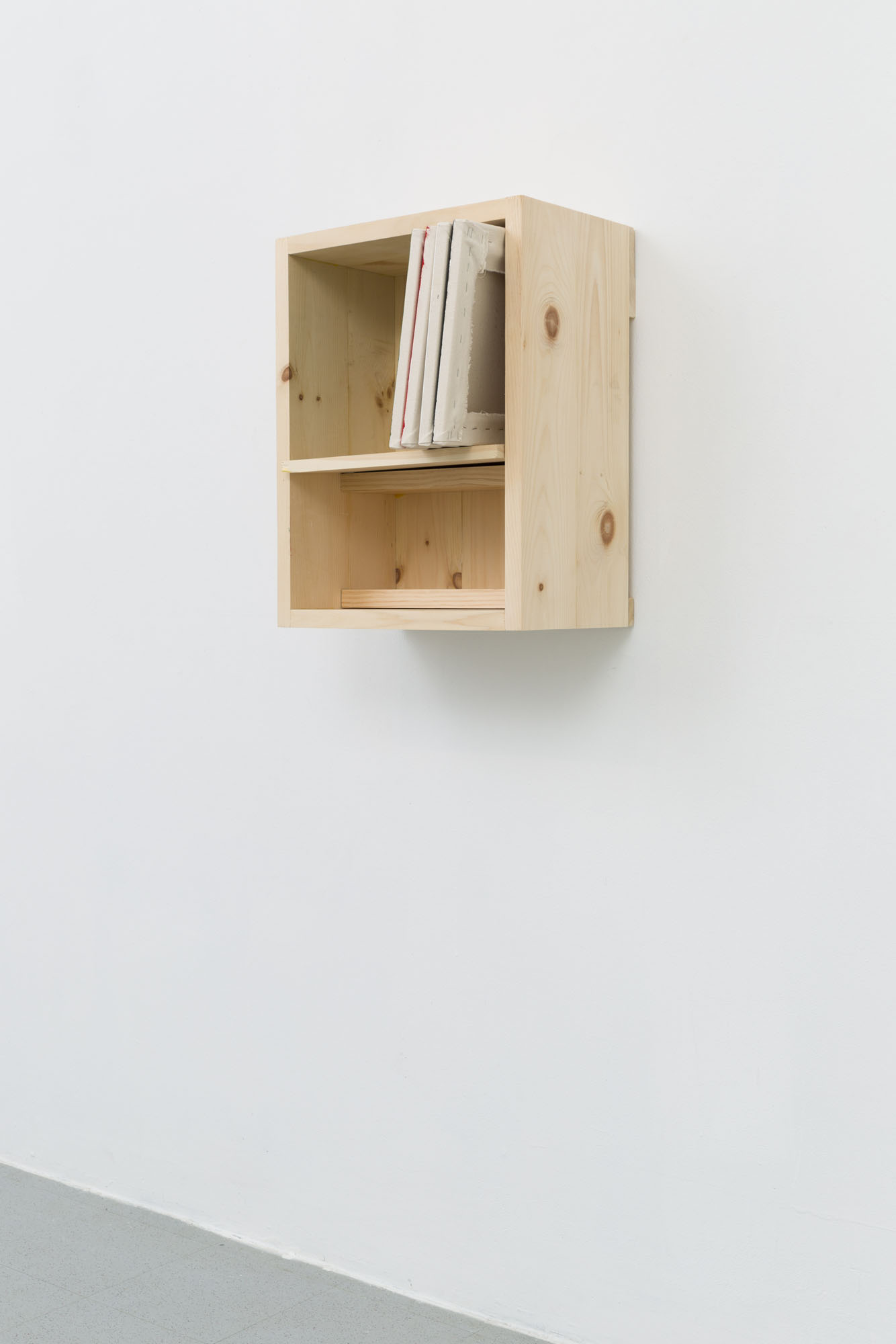
Ariana Martinez’s Ghost Affliction [worry stone ritual] is a print accompanied by three different ghost prints, devotional ritual iterations of the “original.” They represent both worry stones—meditative tools that might be kept in a pocket—and the thrown stones iconic of Palestinian resistance. Ghost affliction is drawn from a direct translation of an ancient Sumarian text surrounding the experience of debilitating migraines. This relationship of debility and haunting also calls to mind the ways in which we are witnessing the intentional disablement of targeted populations in this current moment of perpetual war and contemporary genocides - from the ongoing pandemic to intentional debilitation of Palestinian people.

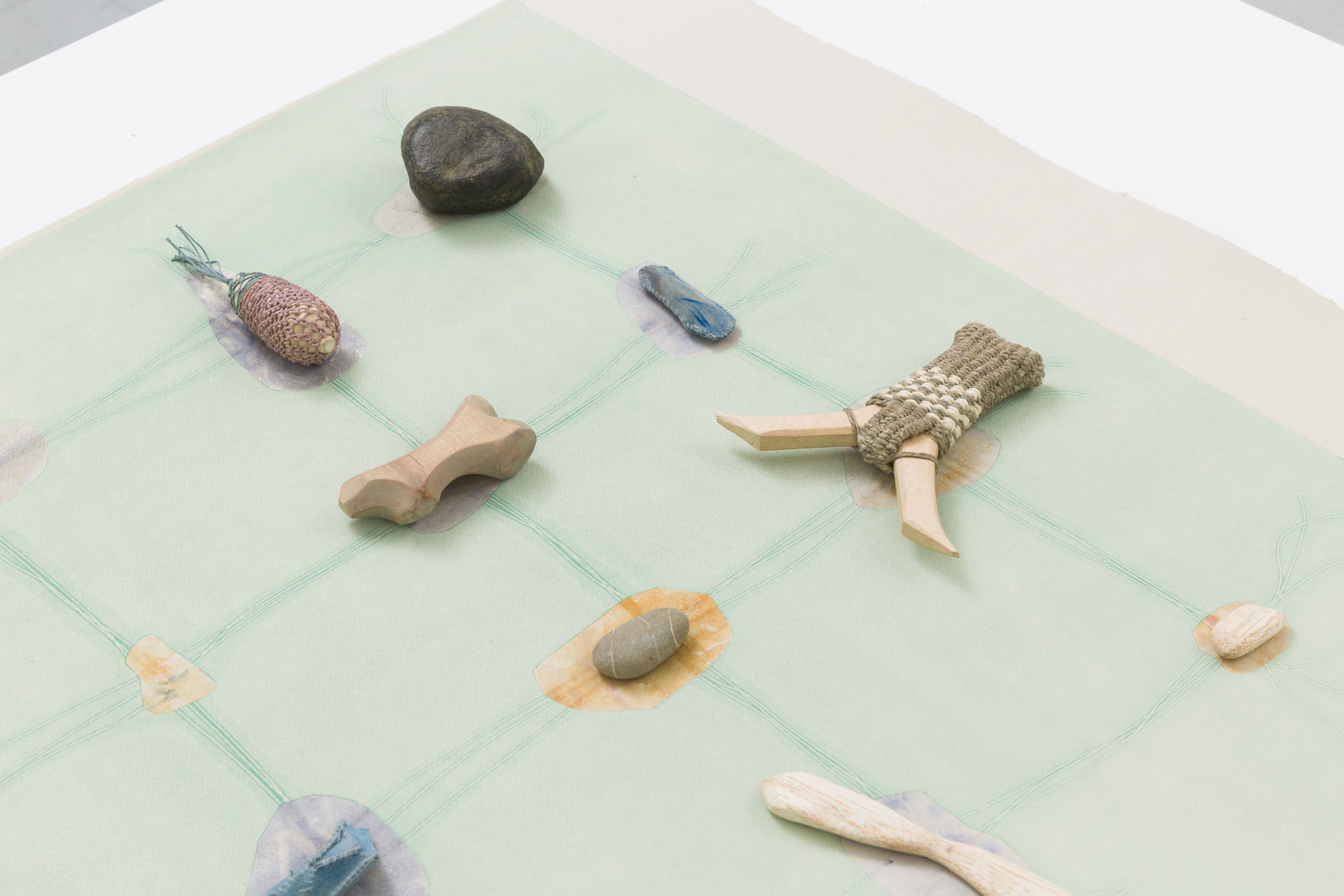
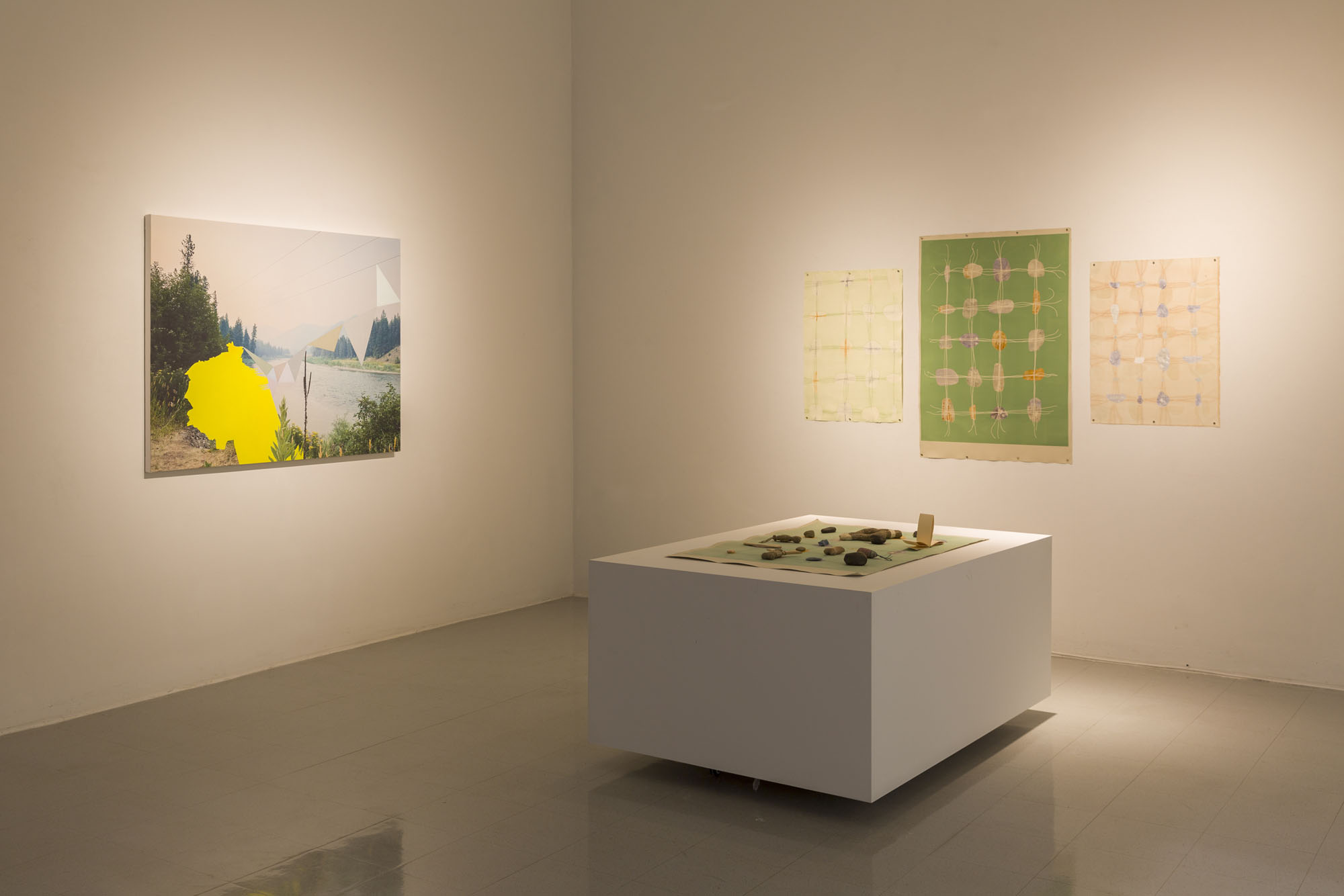

The exhibition seeks to offer only the “neutrality” of authentic, transcendent experience, which operates across “time, place and culture.” It appeals to viewers’ freedoms and the artworks’ aesthetic agency-both untainted by intellectual, critical, or historicizing interference. These underlying fantasies of unconstrained mobility for some and tightly regimented constraint for others are hallmarks of empire, in both its earlier colonial and current capitalist forms.
Al-an DeSouza, How Art Can Be Thought
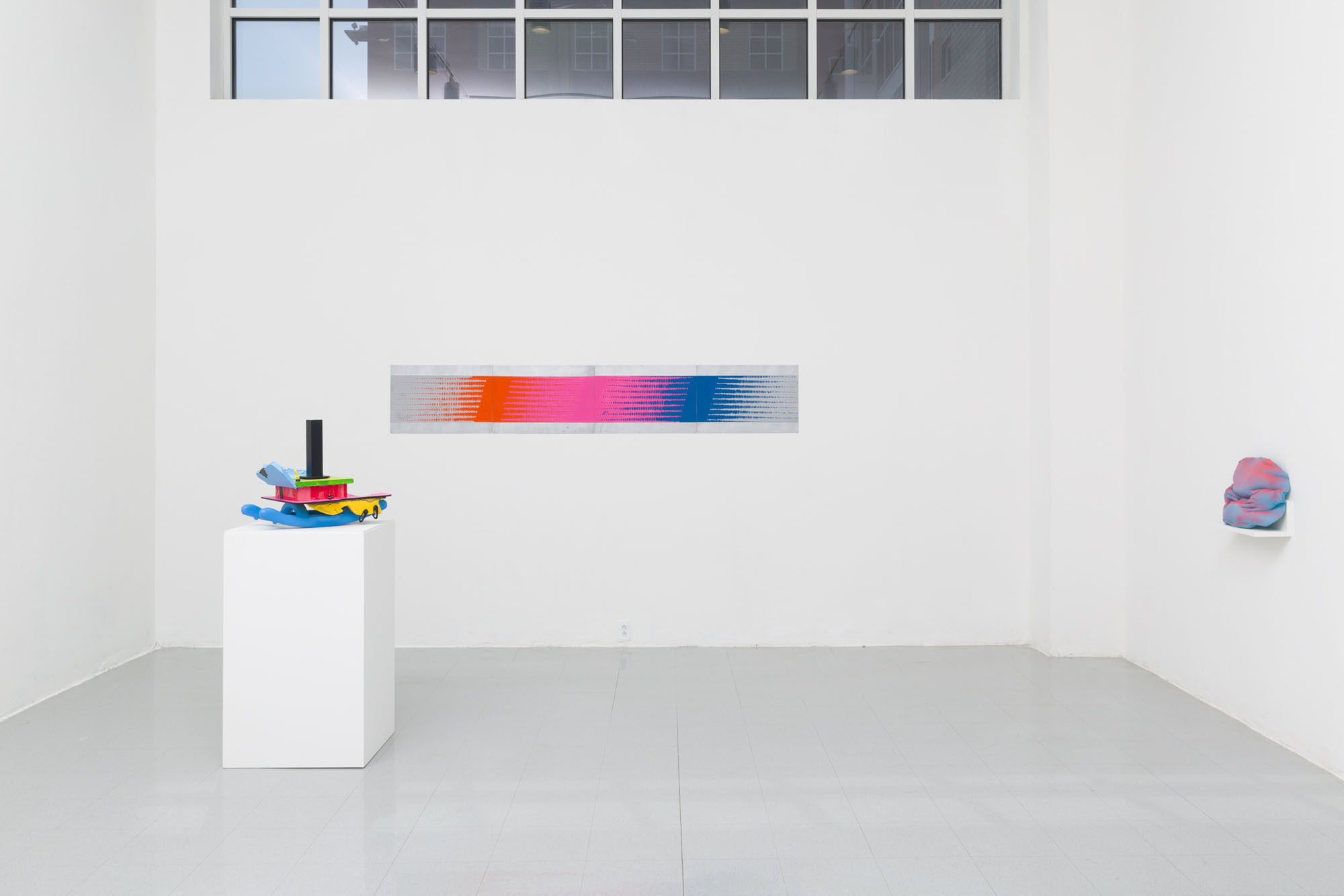
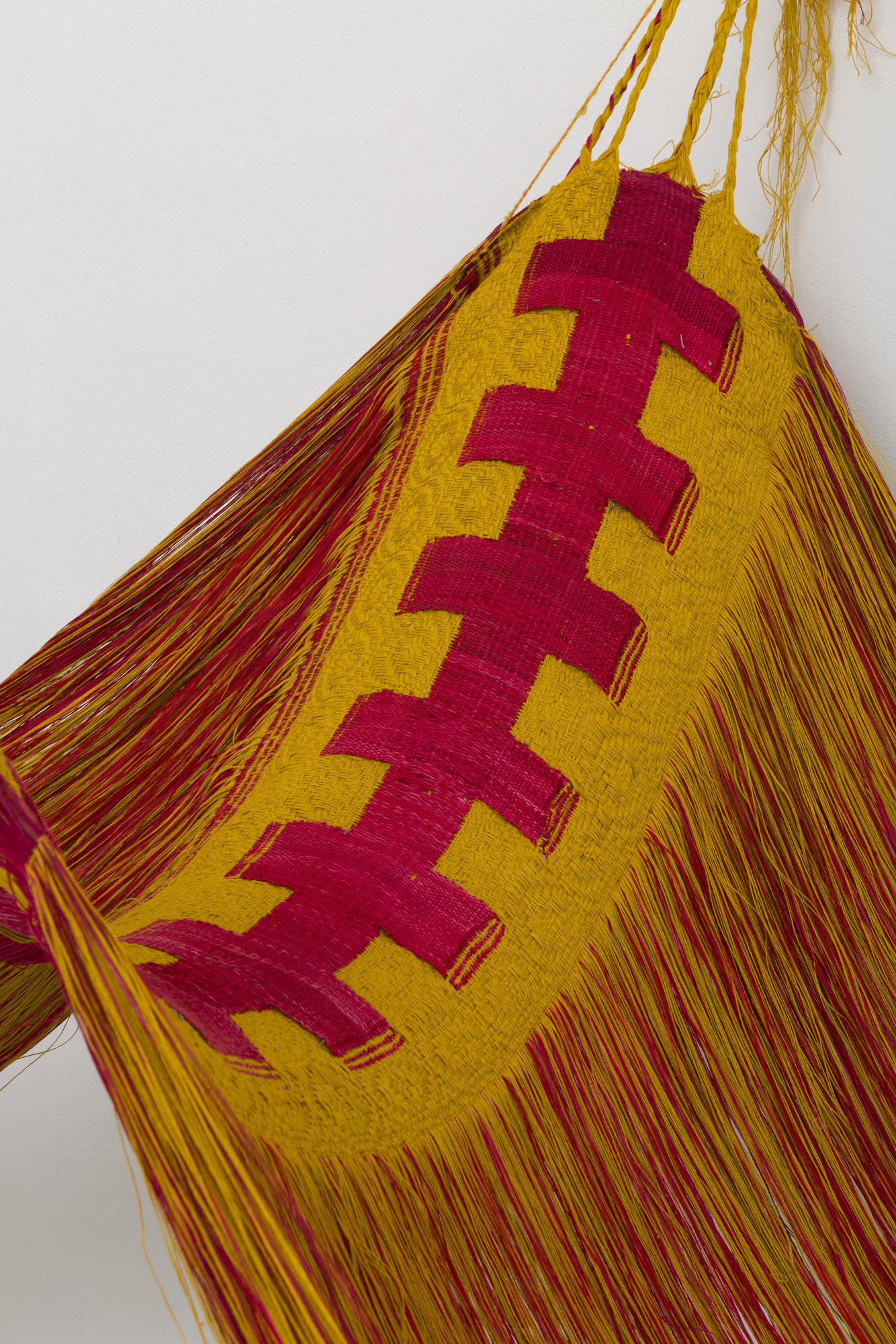
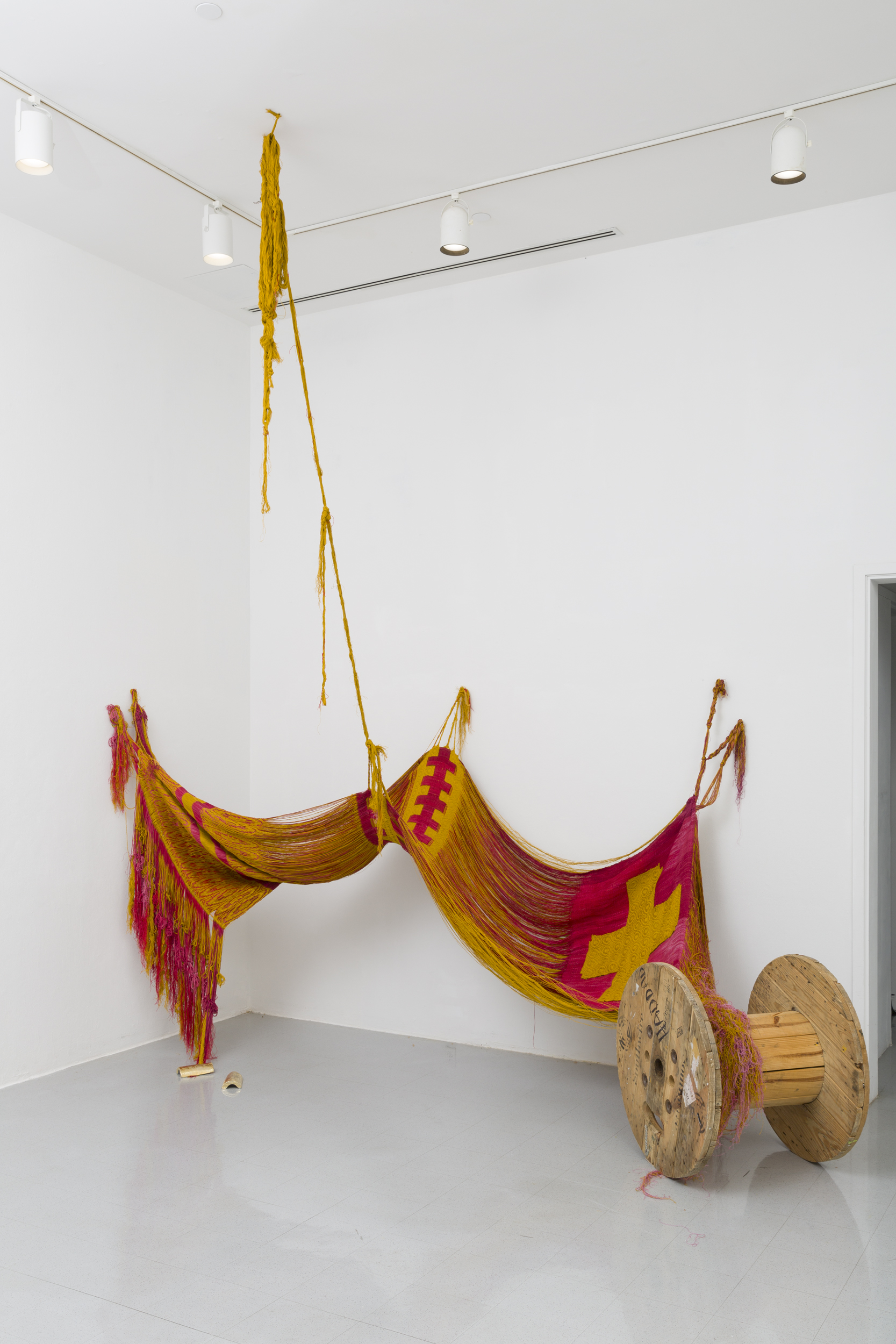
This exhibition was posed as an unpaid opportunity to show work in our “community.” We chose to volunteer in the hopes of highlighting the kind of work that so rarely survives its entry to the institution: liberatory art, strong institutional critique, paintings that acknowledge and build on their political context rather than affect detachment. Yet the fundamental framing of the exhibition (welcome back to Rutgers) contains the circumstances that brought us all together in the first place. None of us, staff, faculty, or students, are here at random; we all access Mason Gross through some mixture of class privilege, citizenship, and proximity to whiteness.
Still, we have striven toward our ideal within the confines of this show. We see the anti-disciplinary group show, artist-organized and co-curated, as closer to an anticapitalist form of exhibition. Like many who exist outside of, around, and underneath the capitalist art world of lavish solo shows and exclusive gallery representation, we’ve turned to the possibilities inherent in the group show, even here at Mason Gross. In this, we bypass the myth of the individual to understand art as a communal space of study amongst thinkers, writers, makers, organizers, and curators. We produce meaning, thus, as a mode of collectivity: in relationship, in study, in struggle, and sometimes, in love.
And once more for the people in the back: Free Palestine.